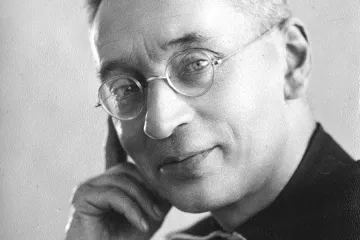London, England, Mar 8, 2022 / 02:05 am
The first canonization ceremony for more than two and a half years will take place on May 15. Among the 10 candidates who will be proclaimed saints by Pope Francis that day is Titus Brandsma.
Many Catholics are familiar with Brandsma’s portrait: his pale, steady eyes, prominent ears, and buoyant hair. But who was the man behind the steel-rimmed glasses?
The two vocations of Titus Brandsma
Titus Brandsma was born in the Netherlands, a country bordering Belgium and Germany, on Feb. 23, 1881. His parents named him Anno Sjoerd Brandsma and he grew up in the rural setting of Oegeklooster in the province of Friesland. His family lived on the proceeds of the milk and cheese produced by their dairy cattle.
Brandsma felt a calling to the religious life and joined the Carmelite monastery in Boxmeer, southeastern Netherlands, in 1898, taking his father’s name, Titus, as his religious name.
Although the Carmelites are known for separating themselves from worldly affairs and engaging in contemplative prayer, Brandsma felt called to a second vocation — journalism — that would draw him into the drama of interwar Europe.
In the years ahead, he would successfully combine the two seemingly contrasting vocations.
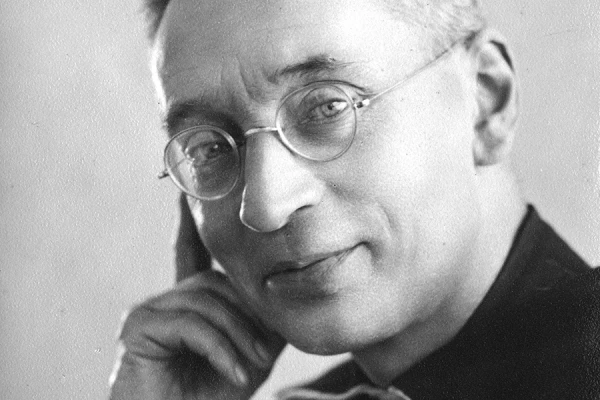
A globetrotter with a strong head for whiskey
Brandsma was ordained to the priesthood on June 17, 1905. After studying in Rome, he returned home to work in the field of Catholic education.
When the Catholic University of Nijmegen was founded in 1923, he joined the faculty, rising to become the institution’s rector magnificus, or head, in 1932.
With fears of a second world war rising in Europe, Brandsma was asked by his superiors in Rome to undertake a lecture tour of Carmelite foundations in the United States in 1935.
To improve his English, he visited Ireland, staying with Carmelite communities in Dublin and the picturesque coastal town of Kinsale.
During the trip, he met with Éamon de Valera, the then head of government of the Irish Free State. The Irish Carmelites were reportedly impressed by Brandsma’s ability to consume whiskey without ill effects.
Shortly before he crossed the Atlantic, Brandsma was appointed spiritual adviser to the staff of more than 30 Catholic newspapers in the Netherlands by the future Cardinal Johannes de Jong of Utrecht.
Upon arrival in the U.S., Brandsma traveled in the East and Midwest.
(Story continues below)
He was struck with wonder at Niagara Falls, writing in his journal: “I see God in the work of his hands and the marks of his love in every visible thing. I am seized by a supreme joy which is above all other joys.”
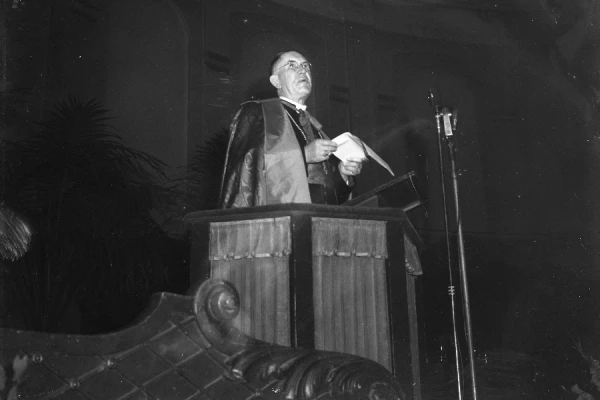
A dangerous mission
Throughout the 1930s, Brandsma watched aghast as Adolf Hitler strengthened his grip on neighboring Germany. The friar sharply criticized Nazi policies in newspaper articles and lectures. “The Nazi movement is a black lie,” he said. “It is pagan.”
After Nazi Germany invaded the Netherlands on May 10, 1940, the authorities imposed severe restrictions on the Church. They ordered Catholic schools to expel Jewish students, barred priests and religious from serving as high school principals, restricted charitable collections, and censored the Catholic press. The Dutch bishops asked Brandsma to plead their cause, but without success.
In 1941, the bishops spoke out boldly against the Nazis. Their interventions infuriated Arthur Seyss-Inquart, the Reich commissioner of the German-occupied Netherlands, who sought ways of striking back.
When Dutch newspapers were told to accept advertisements and press releases from their Nazi overlords, the archbishop of Utrecht asked Brandsma to tell the country’s Catholic editors that they should refuse the order.
According to an account in the 1983 book “No Strangers to Violence, No Strangers to Love,” by Father Boniface Hanley, O.F.M., Archbishop de Jong underlined that the mission was dangerous and the Carmelite was not obliged to accept it.
“Father Titus knew exactly what I said, and he freely and willingly accepted the duty,” de Jong recalled.
Brandsma traveled around the Netherlands delivering letters to the editors explaining the rationale for the bishops’ decision. He was trailed by the Gestapo, Nazi Germany’s political police.
‘If it is necessary, we will give our lives’
Brandsma managed to visit 14 editors before he was arrested on Jan. 19, 1942, at the monastery in Boxmeer. As the Gestapo prepared to take him away, he knelt before his superior and received his blessing.
“Imagine my going to jail at the age of 60,” Brandsma said to the man arresting him.
The friar was taken to a prison in the seaside town of Scheveningen, where the interrogating officer demanded to know why he had disobeyed state regulations.
“As a Catholic, I could have done nothing differently,” Brandsma responded, according to Father Hanley.
The officer, Captain Paul Hardegen, later asked Brandsma to express in writing why his countrymen scorned the Dutch Nazi party.
“The Dutch,” the friar wrote, “have made great sacrifices out of love for God and possess an abiding faith in God whenever they have had to prove adherence to their religion … If it is necessary, we, the Dutch people, will give our lives for our religion.”
“The Nazi movement is regarded by the Dutch people not only as an insult to God in relation to his creatures, but a violation of the glorious traditions of the Dutch nation.”
In conclusion, Brandsma said: “God bless the Netherlands. God bless Germany. May God grant that both nations will soon be standing side by side in full peace and harmony.”
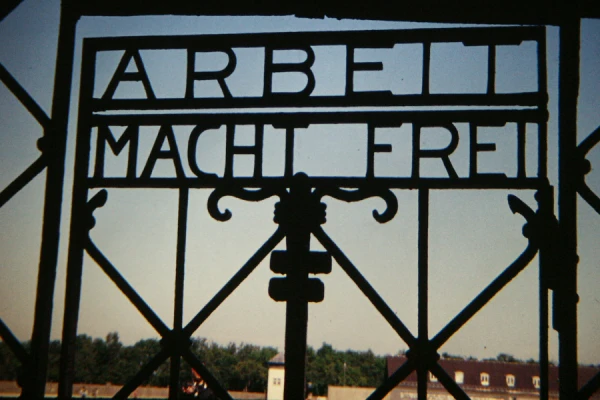
Signs of the Cross
The Dutch friar was always meticulously organized. He resolved not to waste a moment of his time in prison. He followed a strict timetable that included “walks” around his cell while smoking his pipe (until it was confiscated.) He worked on a biography of the Carmelite St. Teresa of Avila, composed meditations on the Stations of the Cross and wrote letters.
On March 12, 1942, this routine was broken when Brandsma was taken to a transit camp at Amersfoort, central Netherlands. With around 100 other prisoners, he was forced to stand outside in the bone-chilling rain.
The men were led inside and ordered to change their clothes. But as Brandsma removed his drenched black clerical suit, the prisoners were forced outside again, this time naked.
The Carmelite was put to work later clearing a forest. Despite the grueling labor, he remained cheerful, according to fellow prisoners, who said that he would share his tiny rations with the hungry and show special care for Jewish prisoners.
Brandsma disobeyed a ban on priestly ministry, giving prisoners his daily blessing by discreetly making the Sign of the Cross on their hands with his thumb. He heard confessions, visited the dying, and even led the Stations of the Cross.
He stood firm in the face of further Gestapo questioning and was eventually told that he would be sent to the Dachau concentration camp in southern Germany, later called “the largest priest cemetery in the world.”
With his health collapsing, Brandsma stopped en route at a prison in Kleve, northwestern Germany, where he made an unsuccessful appeal for parole.
“In Dachau, I will meet friends, and God the Lord is everywhere,” he wrote during the stopover. “I could be in Dachau for a very long time. It doesn’t have such a very good name that you really long for it.”
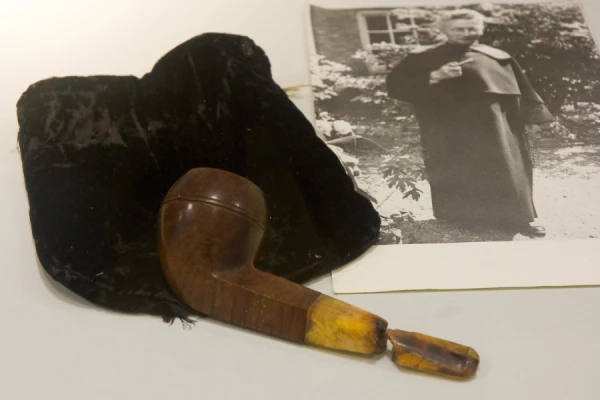
‘I had Jesus with me’
“From the very moment Titus entered the camp, his calmness and gentleness infuriated his captors,” wrote Father Hanley. “They beat him mercilessly with fists, clubs, and boards. They kicked, punched, and gouged him, drawing blood and oftentimes leaving him nearly unconscious in the mud.”
During one beating, Brandsma was holding a consecrated Host concealed in a tobacco pouch. He kept it safe by keeping his arm pinned to his body as the blows rained down. When he made it back to his bunk, another Carmelite prisoner tried to comfort him. “Thank you, Brother,” Brandsma said, “but don’t have pity on me. I had Jesus with me in the Eucharist.”
The friar suffered from such painful sores on his feet that his fellow prisoners would have to carry him back to the barracks at the end of the day’s work.
Throughout, he retained what one inmate called a “cheerful courage.” He advised others to be patient and avoid hatred. “We are here in a dark tunnel but we have to go on. At the end, the eternal light is shining for us,” he told them.
For as long as possible, he resisted going to the camp’s infirmary, aware that doctors performed sadistic experiments on patients. But he was finally admitted, and on Sunday, July 26, 1942, a nurse gave him a lethal injection.
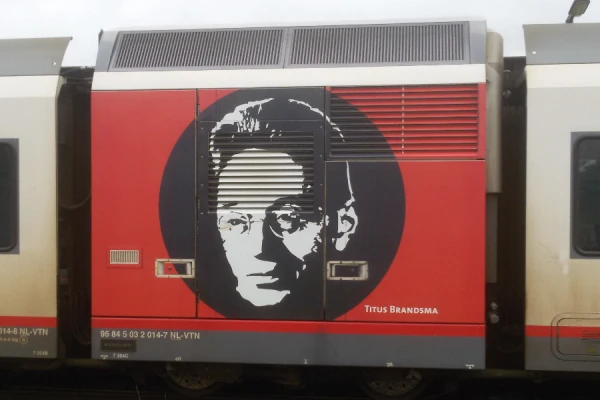
A smile for everyone
Brandsma’s beatification cause opened in the Dutch Diocese of Den Bosch in 1952. It was the first process for a candidate considered a martyr of the Nazi regime.
The friar was beatified by Pope John Paul II on Nov. 3, 1985, as a martyr for the faith.
In his homily, the Polish pope praised Brandsma’s “constant vein of optimism.”
“It accompanied him even in the hell of the Nazi camp. Until the end, he remained a source of support and hope for the other prisoners: he had a smile for everyone, a word of understanding, a gesture of kindness,” he said.
“The same ‘nurse,’ who on July 26, 1942, injected him with deadly poison, later testified that she always kept vivid in her memory the face of that priest who ‘had compassion on me.’”
The nurse, known as “Titia,” testified that Brandsma gave her his rosary. When she responded that she could not pray and did not need it, he encouraged her to recite the second part of the Hail Mary, “Pray for us sinners.”
“I started laughing then,” she recalled. “He told me that, if I were to pray a lot, I would not be lost.”
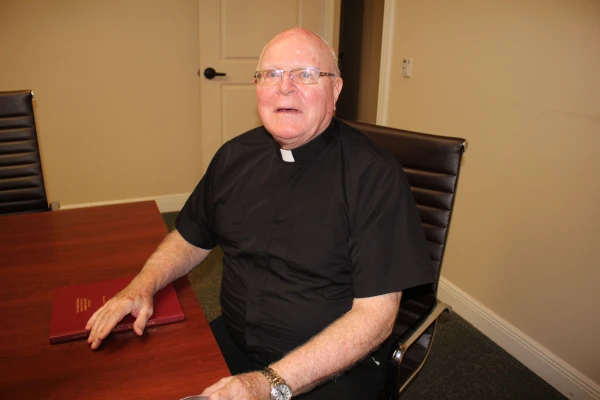
Thirty-six years after Brandsma’s beatification, on Nov. 25, 2021, Pope Francis recognized a miracle attributed to the friar’s intercession.
A Catholic priest in Florida told CNA in 2018 that he attributed his miraculous healing from cancer to Brandsma’s intercession.
Fr. Michael Driscoll, O. Carm, was diagnosed with advanced melanoma in 2004. Shortly afterward, someone gave him a small piece of Brandsma’s black suit, which the American priest applied to his head each day.
Driscoll underwent major surgery, with doctors removing 84 lymph nodes and a salivary gland. He then went through 35 days of radiation treatment.
Doctors said that his subsequent recovery from Stage 4 cancer was scientifically inexplicable. Driscoll recalled that his doctor told him: “No need to come back, don’t waste your money on airfare in coming back here. You’re cured. I don’t find any more cancer in you.”
A congress of theologians acknowledged the healing as a miracle on May 25, 2021. A gathering of cardinals and bishops reached the same conclusion on Nov. 9 that year.
Pope Francis confirmed their opinion on March 4, 2022, announcing that he would canonize Brandsma. The pope is expected to preside at a canonization Mass in St. Peter’s Square on May 15 — the first since Oct. 13, 2019.
Father Míceál O’Neill, O. Carm., prior general of the Carmelite Order, said: “This is the news we have been awaiting for a long time and it comes as the result of the Church’s recognition of the holiness and witness of Titus Brandsma.”
“It is not without significance that we have this celebration at a time when truth and integrity is suffering seriously in the major conflicts that now threaten the peace of the world.”





